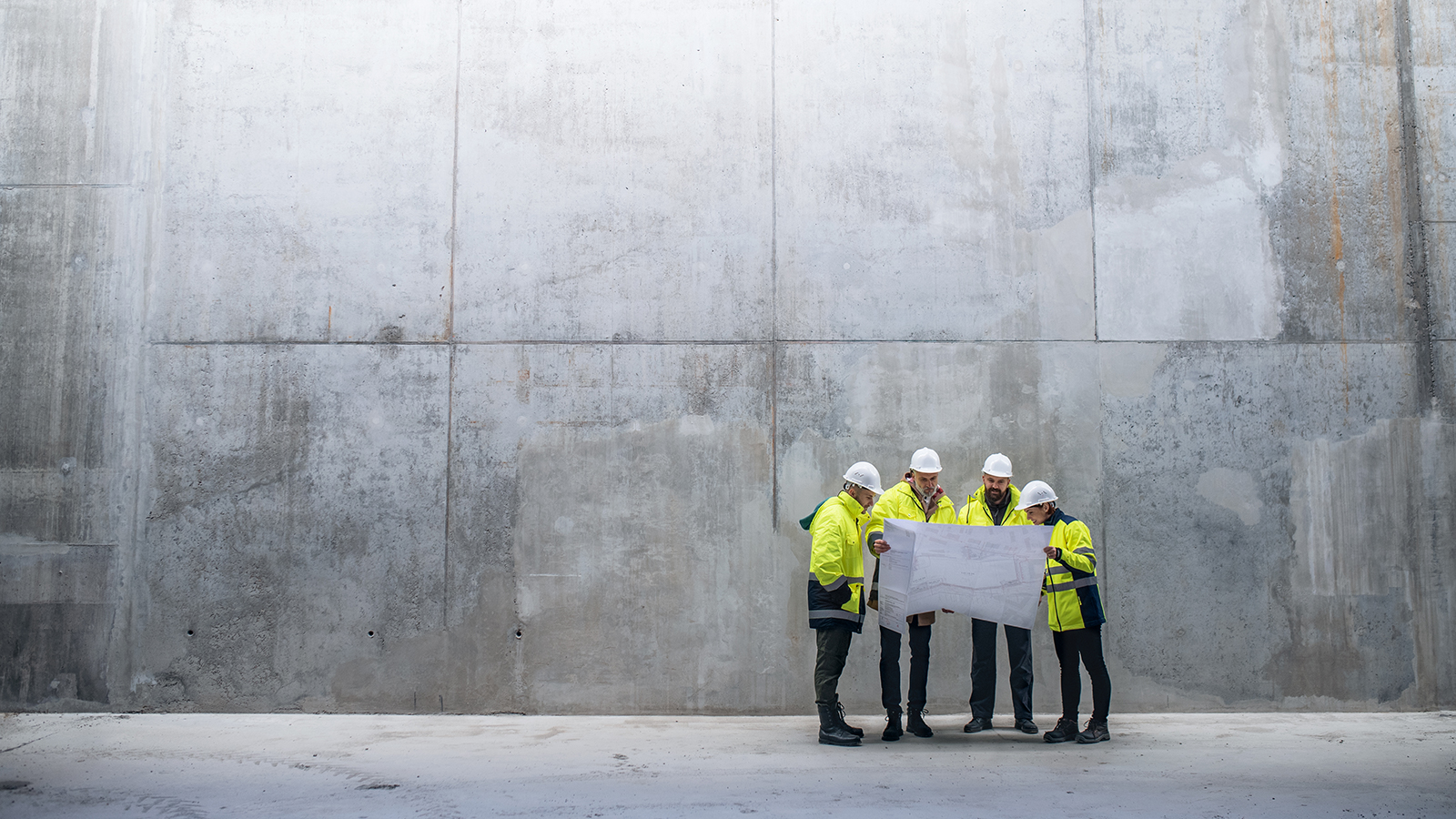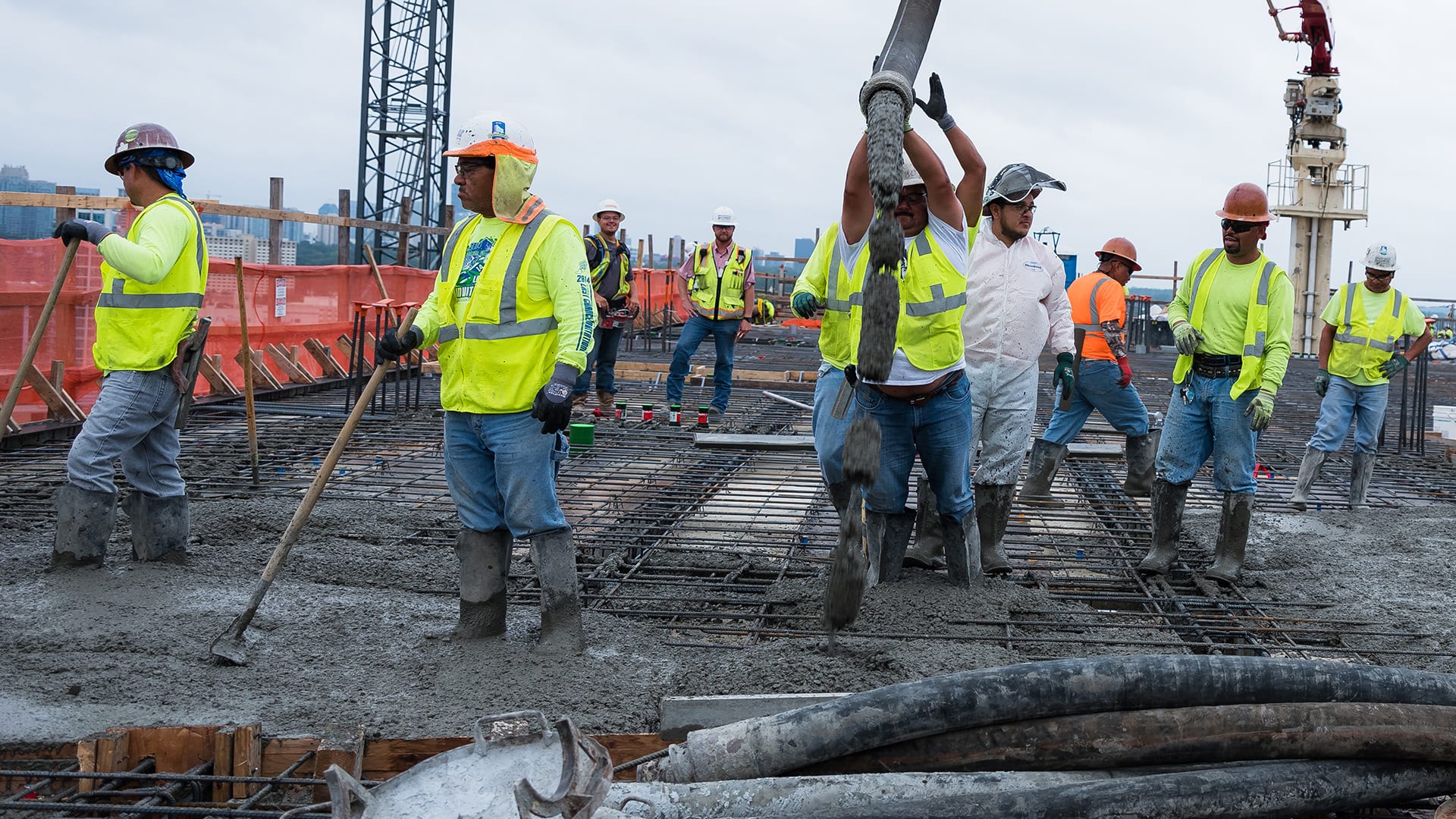5 Questions You Must Ask Your West Coast GE Concrete contractors Before Breaking Ground
5 Questions You Must Ask Your West Coast GE Concrete contractors Before Breaking Ground
Blog Article
The Necessary Duty of Concrete Foundation in Structural Stability and Longevity
When it comes to developing a building, the foundation is extra crucial than you may assume. Concrete structures supply unrivaled toughness and sturdiness, guaranteeing your framework can hold up against numerous ecological challenges. Without a strong base, you risk prospective issues like shifting or splitting, which can jeopardize security and worth. Comprehending the nuances of concrete structures might be the key to preserving your financial investment for many years to find. What should you think about next?
Recognizing the Significance of Concrete Foundations
Concrete structures are crucial to the general stability of any structure, as they give the crucial support needed to withstand different lots and ecological problems. When you think of constructing a home or a business room, the foundation is the initial point you should take into consideration. It acts as an obstacle versus wetness, securing your property from water damages. A well-placed concrete structure additionally protects against settling and changing, which can cause splits in wall surfaces and floors. You'll want to guarantee that the structure is appropriately created and reinforced, as this affects the durability of your structure. Additionally, a solid foundation can boost power effectiveness by decreasing air leakages. Bear in mind, overlooking the value of a concrete foundation can result in pricey repair work down the line. So, purchasing a high quality structure upfront is vital for the integrity and resilience of your structure.
Benefits of Concrete Structures for Structural Honesty
While many factors add to a building's architectural integrity, concrete structures use unmatched durability and toughness. You'll value that concrete can withstand extreme weather, resisting both dampness and temperature variations. This durability means your framework is less most likely to experience breaking or shifting over time, which can jeopardize its safety.Additionally, concrete's fundamental weight gives a solid base, preventing movement during all-natural events like quakes or floods. When you pick a concrete structure, you're additionally selecting low upkeep; unlike timber, it will not rot or draw in bugs, saving you time and money in repairs.Moreover, concrete's fire resistance supplies added safety and security, ensuring your framework can endure high temperatures without substantial damages. Overall, investing in a concrete structure suggests you're focusing on the long-term security and integrity of your structure, making it a sensible option for any kind of construction job.
Common Types of Concrete Foundations
When it pertains to building foundations, comprehending the typical kinds of concrete foundations can aid you make notified choices for your task. One of the most prevalent kinds include slab-on-grade, crawl space, and full cellar foundations.A slab-on-grade foundation is an easy, economical choice, where a thick concrete slab is put directly on the ground. This type works well in cozy climates, as it lessens heat loss.Crawl area foundations raise the home a little above ground, enabling for ventilation and access to plumbing and electrical systems. This design can help avoid moisture issues.Full cellar foundations use additional living or storage area while giving superb structural assistance. They need more excavation and are generally used in chillier climates to prevent frost heave.
Variables to Think About When Designing a Concrete Foundation

Finest Practices for Putting Up Concrete Foundations
When you're setting up a concrete foundation, correct website preparation is important to ensure security (West Coast General Engineering commercial concrete Rancho Cucamonga). You'll also require to understand support methods to improve stamina and sturdiness. Lastly, don't forget the treating process, as it plays a fundamental role in attaining a solid structure
Site Preparation Significance
It may appear uncomplicated, appropriate site prep work is vital for ensuring a solid and durable concrete structure. Start by removing the area of any debris, plant life, or organic material that can compromise the structure's integrity. Next off, analyze the soil type and compaction; you may need to dig deep into or add materials to produce a secure base. Degree the ground to assure also weight circulation and avoid resolving problems later on. Setting up proper drainage systems is likewise important to prevent water build-up, which can weaken the structure in time. Mark out the structure's measurements precisely to direct the pouring procedure. By following these steps, you'll set the stage for a successful concrete structure that stands the test of time.
Reinforcement Techniques Clarified
Once the site is effectively prepared, the following action in assuring a tough concrete foundation involves implementing effective support methods. You must begin by utilizing steel rebar, which gives tensile stamina and helps stop splitting. Lay the rebar in a grid pattern, commercial concrete making certain it rises utilizing spacers to preserve appropriate Read Full Report coverage. Furthermore, consider using cord mesh for added assistance, specifically in locations based on hefty lots. Do not neglect to connect the rebar intersections firmly with cord. For bigger foundations, fiber reinforcement can boost longevity, minimizing the threat of shrinkage cracks. Constantly comply with regional building regulations and standards to ensure conformity. By applying these support methods, you'll greatly enhance your structure's strength and durability, laying a strong groundwork for your framework.
Curing Process Fundamentals
To guarantee your concrete foundation cures properly, it's vital to preserve appropriate dampness and temperature level conditions right away after putting. Beginning by covering the surface with a wet cloth or plastic sheeting to maintain dampness. This maintains the concrete hydrated, preventing cracks and ensuring strength. You should additionally check the temperature level; suitable curing problems are in between 50 ° F and 90 ° F. If it's too hot, haze the surface area consistently to avoid rapid evaporation. For winter, think about using protecting blankets to maintain warmth. Purpose for a healing period of at the very least seven days, as this is essential for optimum stamina development. By following these best techniques, you'll improve your structure's durability and longevity, ensuring structural stability for many years to come.
Maintenance of Concrete Foundations for Long Life
To maintain your concrete foundation strong and long-term, normal assessments are crucial. You ought to additionally assure effective drainage solutions are in location to stop water damage. If you find any splits, resolving them without delay will save you from bigger issues down the line.

Routine Inspections and Evaluations
While normal inspections and analyses could feel like a task, they're important for keeping the integrity of your concrete foundation. By routinely looking for fractures, changes, or signs of wear, you can catch prospective issues before they intensify into expensive repair services. Look for any type of water pooling around the foundation or uncommon settling, as these can indicate underlying troubles. It's likewise smart to monitor any kind of modifications in your house's framework, like doors that stick or home windows that do not open efficiently. Maintaining a record of your examinations aids track changes over time, enabling positive upkeep. Ultimately, these assessments assure your foundation stays steady, supporting the long life and safety and security of your entire structure. Don't neglect this important element of homeownership!
Effective Drain Solutions
Regular assessments can expose concerns like drainage issues that may compromise your concrete structure's stability. To stop water build-up, assure your rain gutters and downspouts straight water far from the foundation. Installing French drains pipes can efficiently redirect surface area and groundwater, reducing pressure on your foundation walls. Furthermore, grading the dirt concrete molding design around your home assists guarantee that water flows away, instead of pooling near your foundation.Consider utilizing sump pumps in areas vulnerable to flooding, as they proactively eliminate excess water. On a regular basis inspect for clogs in drainage systems and clear them immediately. You'll safeguard your foundation's integrity and long life by taking these aggressive procedures. Bear in mind, effective water drainage solutions are important for keeping a solid, sturdy concrete foundation.
Trigger Crack Services
When you see cracks in your concrete structure, resolving them promptly is essential for preserving its longevity. Little fractures can swiftly develop right into larger problems, endangering the architectural stability of your home. Consistently check your foundation for indicators of damage, such as horizontal or upright splits. If you identify any type of, don't wait-- fix them quickly. You can use epoxy shots or concrete patching substances, which work for sealing splits. Constantly follow the supplier's directions and consider seeking advice from a professional for significant damages. Keep in mind, prompt repairs not only enhance your structure's resilience but likewise save you money in the future by preventing more considerable fixings down the line. Stay positive, and your structure will certainly remain solid and secure.
Dealing With Usual Concerns With Concrete Foundations
Concrete structures can face numerous issues in time, making it vital to recognize and address them without delay. One of one of the most typical issues is breaking, which can occur as a result of temperature level changes or working out dirt. If you notice cracks, it's important to evaluate their size and deepness; tiny cracks can commonly be sealed, while bigger ones might call for expert evaluation.Water intrusion is one more significant worry. Excess wetness can result in mold and mildew development and architectural wear and tear. Warranty correct water drainage around your structure to reduce this threat. Additionally, try to find signs of shifting or bowing wall surfaces, as this can show underlying concerns with your structure's stability.Regular examinations are basic to catch these issues early. If you identify any type of concerning indicators, do not be reluctant to seek advice from a structure expert. By remaining aggressive, you can keep the honesty and longevity of your concrete structure, ensuring your home stays safe and safe and secure.
Frequently Asked Questions
How Does Soil Kind Impact Concrete Foundation Performance?
Soil kind greatly impacts concrete structure efficiency. If you've obtained expansive clay, as an example, it can cause moving and splitting. Sandy dirt may bring about resolving. Understanding your dirt helps ensure a stable foundation.
Can Concrete Foundations Be Repaired if Damaged?
Yes, you can repair broken concrete foundations. Depending on the level of the damages, strategies like epoxy shot or slab jacking can restore stability. It's ideal to consult a professional for effective solutions.
What Is the Normal Lifespan of a Concrete Structure?
A concrete structure commonly lasts 30 to 100 years, relying on elements like dirt conditions, environment, and upkeep. You'll intend to maintain an eye on it to ensure it remains in good form throughout its lifespan.
Are There Option Materials to Concrete for Foundations?
Yes, there are choices to concrete for foundations, like steel, hardwood, or perhaps recycled materials. Each alternative has unique benefits and disadvantages, so you ought to consider your project's details requirements when picking the best material.
Just How Does Climate Influence Concrete Foundation Toughness?
Environment significantly influences concrete structure longevity (West Coast General Engineering commercial concrete). Extreme temperature levels, dampness, and freeze-thaw cycles can deteriorate the product, leading to fractures and structural concerns. You must think about local climate problems when intending your structure to guarantee long-term performance
Report this page